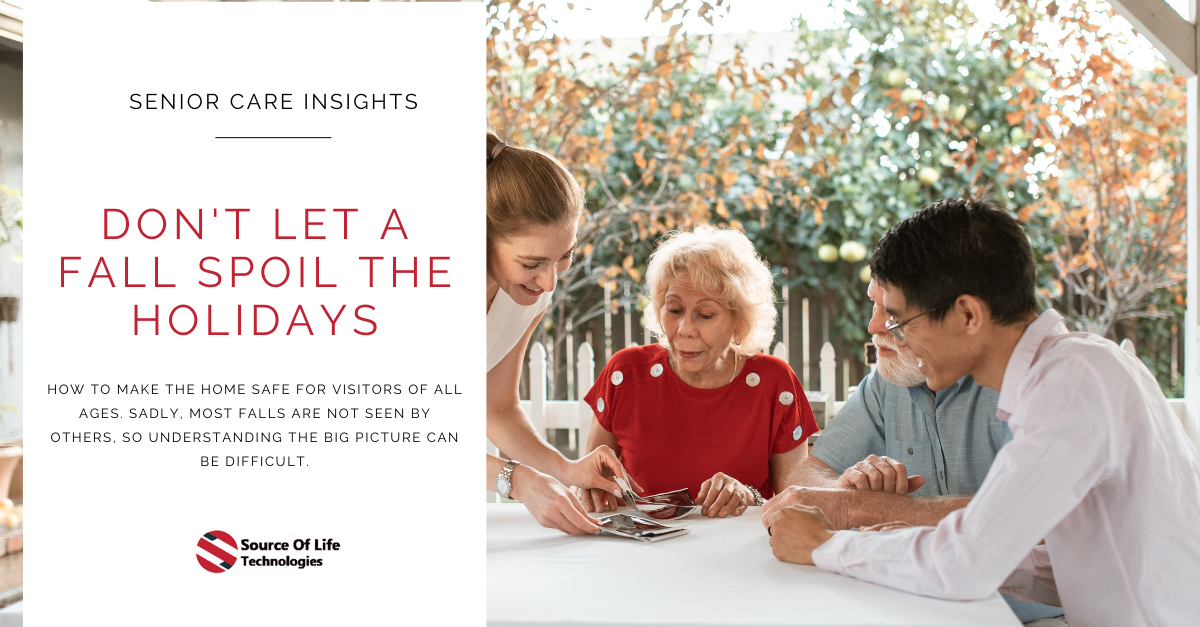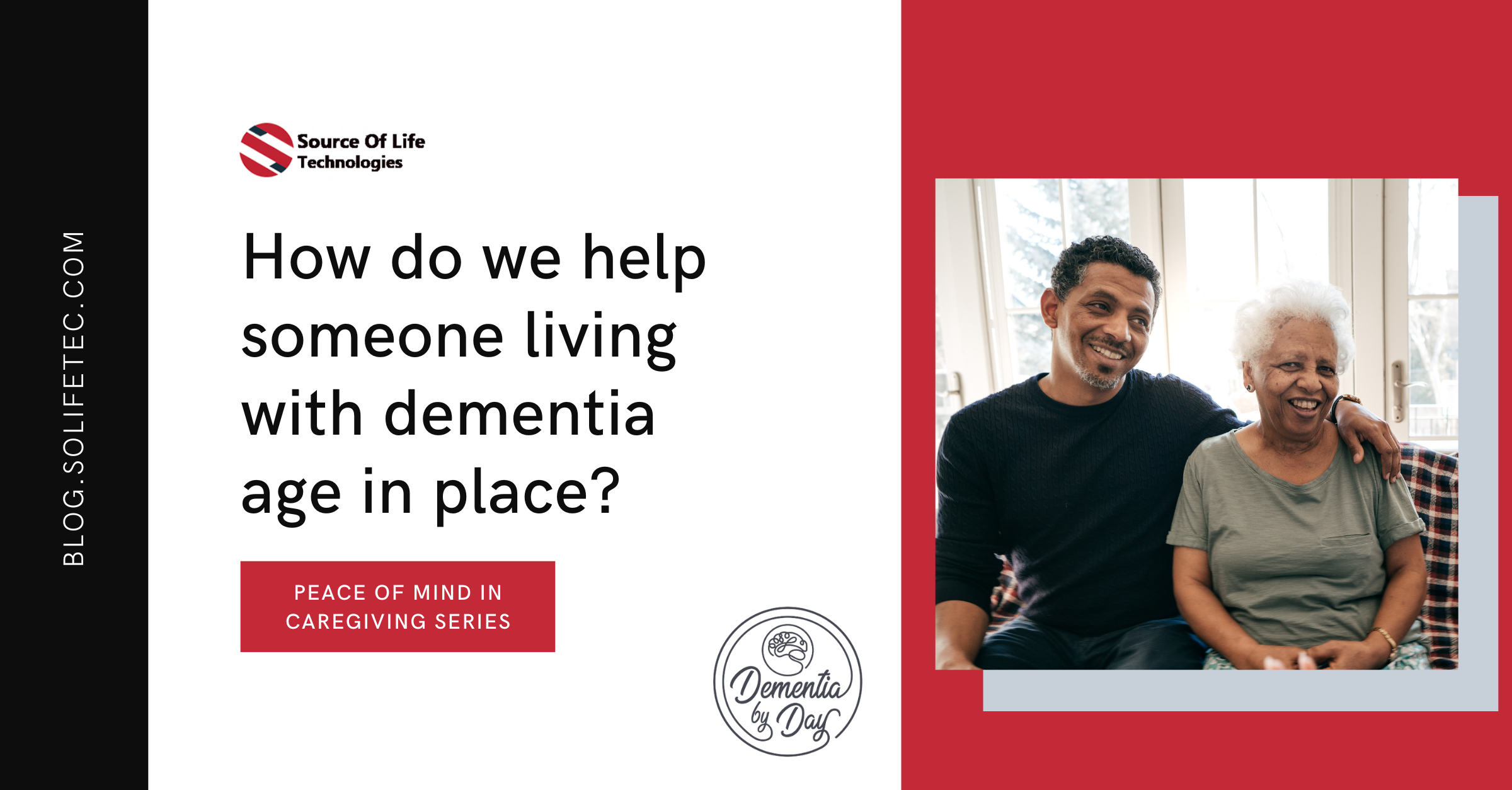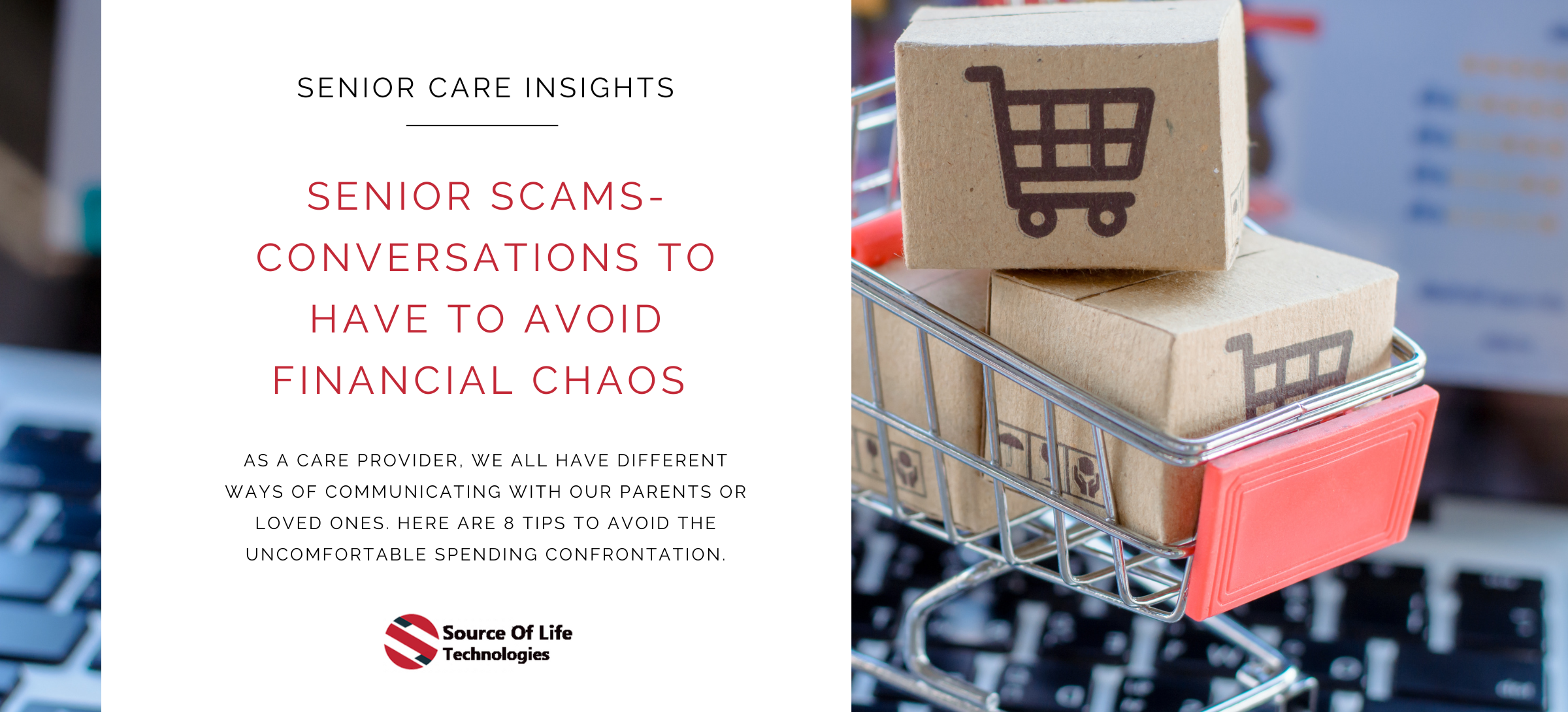Don’t Let a Fall Spoil the Holidays

One of the biggest challenges facing care of older adults is fall prevention. Sadly, most falls are not seen by others, so understanding the big picture can be difficult. And the holiday season can be a prime time for falls because of the hazards of changes in routine, travel, early darkness from daylight savings, and other seasonal activities.
3 million older adults are treated in an emergency room every year for some type of injury related to a fall, according to the CDC. Deaths due to falls are the leading cause of injury related death for Americans 65 and older. Fall death rates have risen 30% in the previous decade, and the CDC predicts that by 2030, 7 fall deaths will occur very hour.
But when do most falls occur? About 20 percent of falls occur between 9 p.m. and 7 a.m., according to a World Health Organization study and about 94% are unseen. Even if the person who falls is able to request help from someone else in the home, it may be difficult to wake others in the house when a fall occurs at night.
How to make a home safe for holiday visitors of all ages
- The excitement of lots of people coming and going, running children, pets and the change in routine may be overwhelming, so plan ahead and go easy on yourself with any mobility changes that come with age or with that of a loved one.
- Light up Walking Paths: Darkness comes early now, so improve indoor and outdoor lighting. Always use a flashlight when walking in the dark. Inside, add night lights in the hallways, stairs, and bathrooms or automate your lighting to trigger when getting up or entering a room.
- Grab our FREE Tips for Preventing Falls HERE!
Increasing Peace of Mind
Typically, when a person is found on the ground there are many unknown factors. And if they are also living with dementia, it is difficult for them to explain what happened.
No one thing alone can be a first line of defense. Often times it starts with wearables like Personal Emergency Response systems or bed alarms. But the user rate for Personal Emergency Response Systems can be low.
The ability to monitor resident “getting up and down habits” will help allow care providers and loved ones to conduct evaluations proactively and avoid costly emergency room visits. Leverage data to keep loved ones safe while maintaining privacy and increasing access to information.
Easy access to entire caregiving teams on one platform allowing review of up and down habits helps when developing actions plans for successful fall management plans.
Interested in learning more about fall prevention? Schedule a FREE consultation to discuss how to automate and improve fall strategies.
Falls in the senior community are far too common, costly, and preventable. Senior care fall strategies shouldn’t be reactive - they should be proactive. Just imagine if you could monitor, track, and address patient needs BEFORE a fall happens. This type of fall prevention initiative is available with Source of Life Technologies - Mat of Life - your modern fall prevention solution.
You can learn more about Mat of Life here.

